| In
late April, the schools in Egypt had a five day holiday weekend and Hans
and I decided (very much at the last minute) to travel to Jordan during
the vacation. A 7 hour bus ride (ugh) got us to Taba, where we
walked across the Israeli border to Eilat. Two taxi rides later, we
arrived at the Jordanian border and crossed into Aqaba, where we found a
bus to Amman. Tired yet? |
| AMMAN |
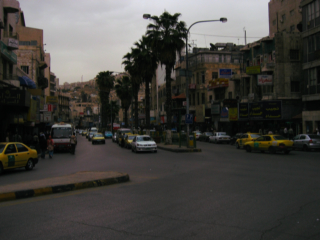 |
Amman
is a city that has an interesting mix of modern city (similar to Cairo)
and Roman ruins. I found substantially less staring and harassment
in Amman than I have come to expect in Cairo, which was a welcome change. |
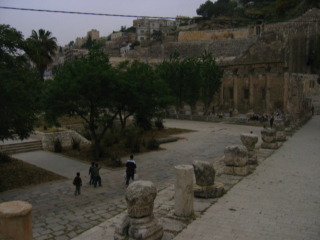 |
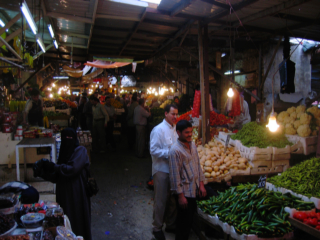 |
The souk we found in Amman is
much like the ones in Cairo, except that it is possible to buy shoes and
clothes in addition to fruit and vegetables. |
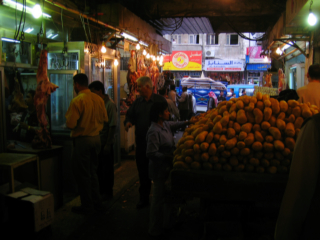 |
|
JERASH |
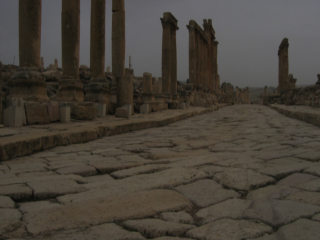 |
Jerash
is a Roman city that is now in ruins, but is huge and remarkably well
preserved. If you look closely, you can see grooves in the rock from
chariot tires (left). |
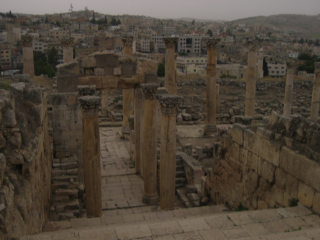 |
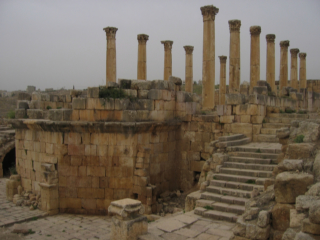 |
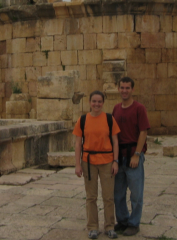 |
The Church of Saint Theodore
was built in 496 AD.
|
|
The North Theater was built in
165 AD and is able to hold 1,600 people. |
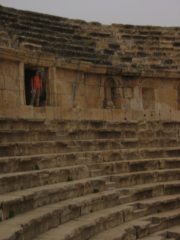 |
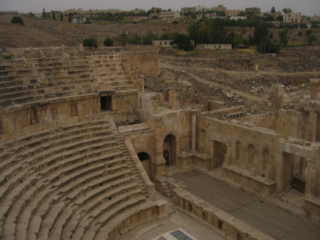 |
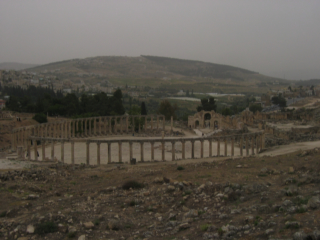 |
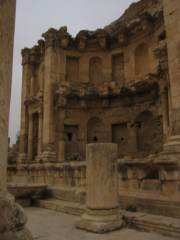 |
The
Oval Plaza (far left) is very large, measuring 90 x 80 m and is surrounded
by columns. The Nymphaeum was an ornamental fountain constructed in
191 AD that looks like it must have been quite impressive in its day. |
| AJLUN |
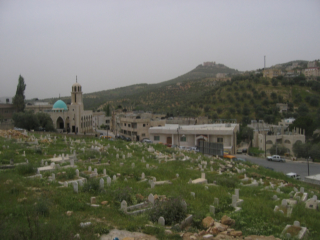 |
Ajlun
is a small town, not far from Jerash that is home to the Ajlun Castle (on
top of the distant hill in the picture to the left). The views of
the surrounding country (right) were most impressive. |
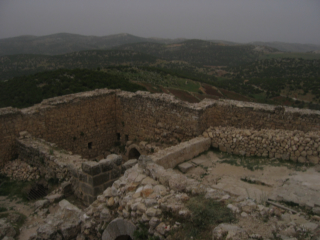 |
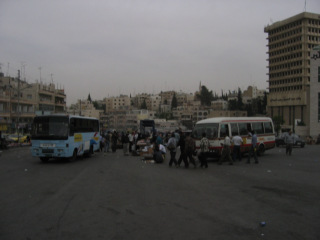 |
Our
primary means of transportation in Jordan was the minibus, which is cheap,
but not typically used by foreigners and there is no schedule.
Minibuses show up irregularly and leave when they are full. |
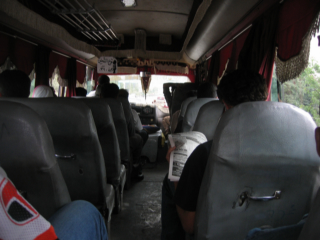 |
| MADABA |
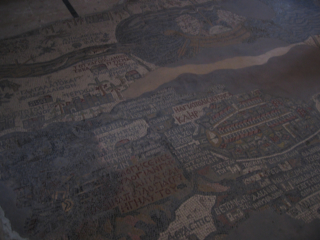 |
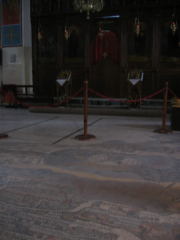 |
After
Amman, Jerash, and Ajlun, our next stop was Madaba, home to the mosaic
churches and the center of Jordanian Christianity. The floor of St.
Georges Church is an elaborate tile mosaic map of the holy land, which is
amazingly accurate and was used as a reference for the excavation of some
parts of the old city in Jerusalem. Many other churches in the area
were built with similar mosaics floors. |
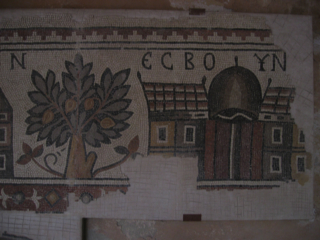 |
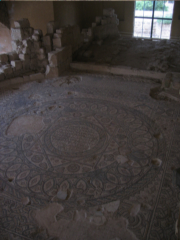 |
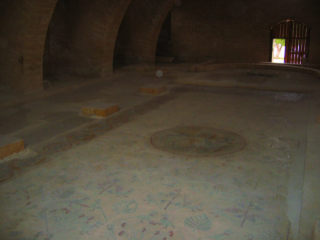 |
| MT.
NEBO |
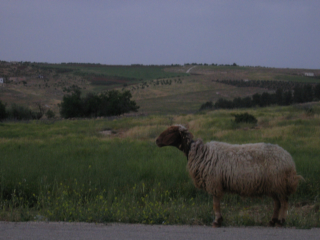 |
At
5:00 the next morning, we got up and hiked 9 km through the Jordanian
countryside to the top of Mt. Nebo. The scenery along our walk was
beautiful and well worth the effort to get up so early! |
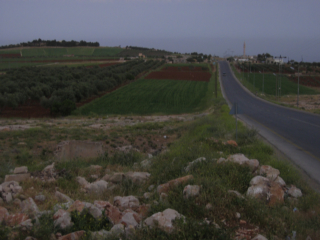 |
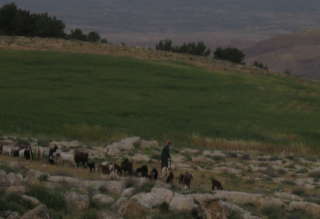 |
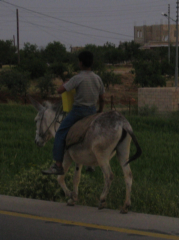 |
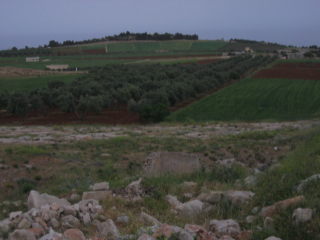 |
| The
view from the top was no less spectacular. Tradition holds this is
where the Israelites got their first glimpse of the holy land and where
Moses died and was buried. It was possible to see the Dead Sea
through the haze, but we're told on the clearest days it is possible to
see the spires of Jerusalem 50 km away. |
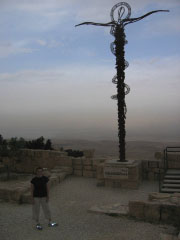 |
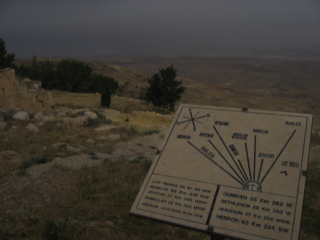 |
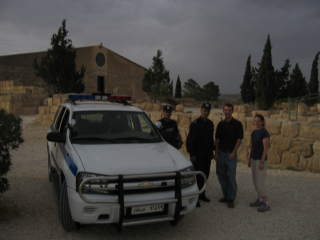 |
While
we were enjoying the view, a photographer asked us to pose for some sort
of tourist police publication (left). We probably won't get famous,
but it was fun nonetheless. |
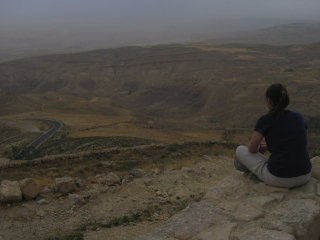 |
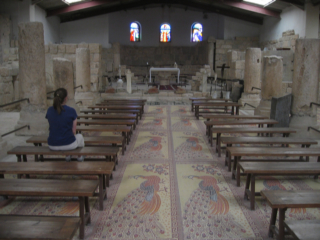 |
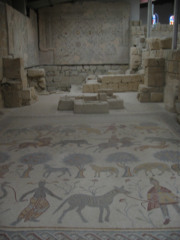 |
Atop
Mt. Nebo stands a church built in memory of Moses. It was a
beautiful stone church with a mosaic tile floor similar to those in the
churches of Madaba. |
| DEAD
SEA |
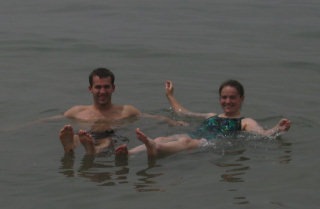 |
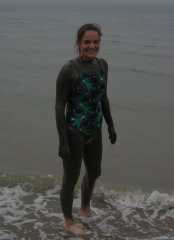 |
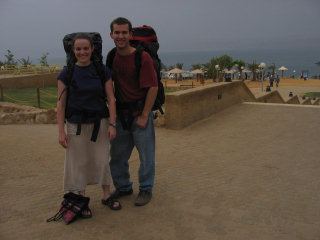 |
| After
a couple more hours of traveling, we made it to the Dead Sea in time for
an afternoon swim (or float) and a Dead Sea mud bath. With a
salinity 11 times greater than that of the ocean, floating in the Dead Sea
is like being weightless - you can't NOT float! As for the mud, it
was a little disgusting and I can't imagine it had any positive effects on
the condition of my skin, but that's what you're supposed to do at the
Dead Sea, so we did it. |
| PETRA |
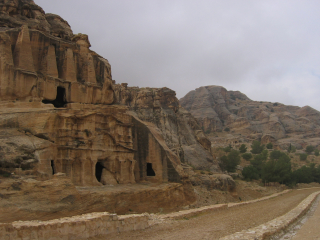 |
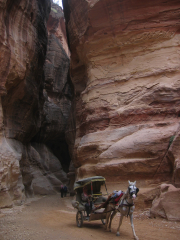 |
A
visit to Petra begins with a walk (or carriage ride) past the first set of
carvings and into a very deep and narrow canyon. |
| Just
as I was feeling impressed by the sheer size of the canyon through which
we were walking, we emerged to find the huge treasury carved into a rock
face. |
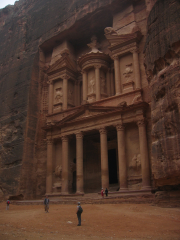 |
You
might recognize this as the set of the last scenes of Indiana
Jones and the Last Crusade. We actually watched the movie at the hotel the
night before our visit to Petra and I wanted to go inside and search for
the grail, but of course the entrance is blocked to tourists. |
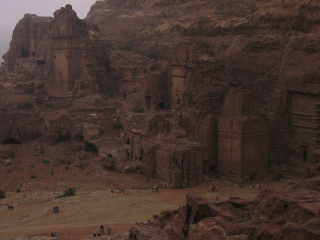 |
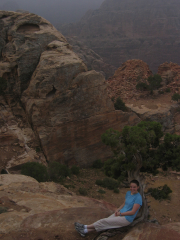 |
Early
in our Petra visit we climbed up many, many steps to the high place of
sacrifice, where our hard work was rewarded by magnificent views of the
surrounding mountains, rock formations, and carvings. |
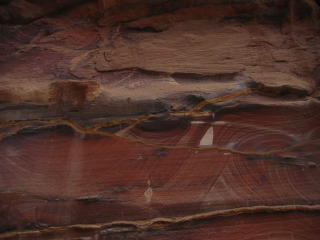 |
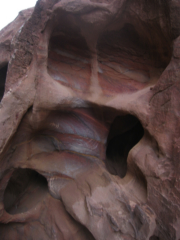 |
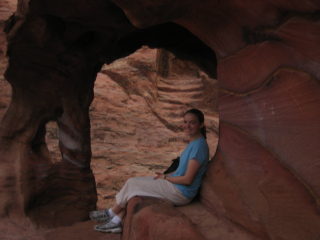 |
| I
am not a geologist, but Petra is an amazing place from a geological
standpoint. Some of the rock formations, and particularly the color
and texture variations of the carved areas and natural surfaces are really
fascinating. |
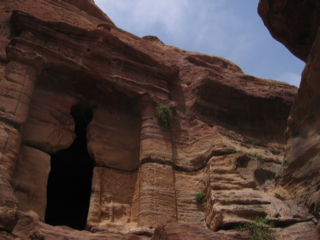 |
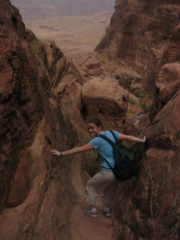 |
Some
of our hikes were more difficult than others, but they all led to amazing
sights! |
| One
of our most strenuous hikes, to the monastery, took a long time and a lot
of energy, but led us to a lot of interesting carvings and great views. |
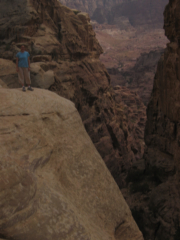 |
 |
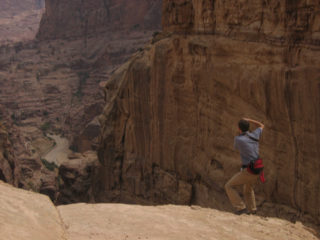 |
The
dedicated photographer stands a little closer to the edge than I would
(left). Everything is commercialized, even the hiking trails
(right). |
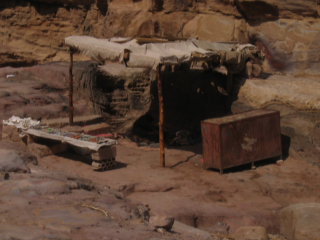 |
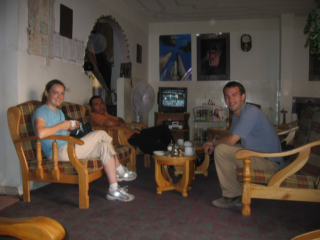 |
The
hotel where we stayed in Petra (left) and the view from our hotel of the
sun setting over Petra (right). |
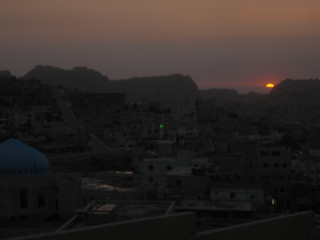 |
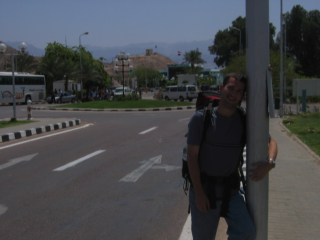 |
On
the way home, Hans makes up with the light post that stepped in front of
him and hit him in the head the last time we were here (left) and the bus
before it broke down (right). |
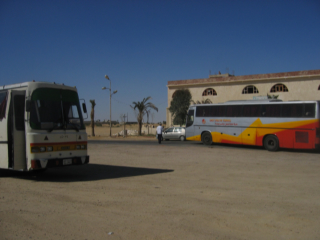 |
